El día 11 de Junio de 2012, una absurda imprudencia originó un violento incendio en la cara norte de la sierra de La Muela.
Gracias a la diligencia y profesionalidad de bomberos y agentes forestales, el incendio pudo ser atajado antes de que cruzara la cima y saltara hacia El Realenco y Los Garabitos, donde hubiera sido imposible controlarlo por la falta de accesos.
Tras el incendio se habían perdido algo más de unos 60.000 m2 de pinar de repoblación.
ARBA es una Asociación en Defensa del Bosque Autóctono que desarrolla tareas de reforestación con especies autóctonas y trabaja por la recuperación de la diversidad del tapiz vegetal.
Restaurando la vegetación potencial de La Muela.
¿Qué se debería hacer entonces en La Muela aprovechando el vacío que ha dejado el incendio? La mejor opción es siempre intentar conseguir el mayor grado de naturalidad posible, intentar tender hacia la vegetación potencial o clímax, que es la que existió en la zona antes de que comenzara su explotación por la actividad humana. La vegetación climática es la que mejor se adapta a las condiciones de suelo y clima del lugar, es la más estable, siendo muy resistente a perturbaciones externas como incendios, plagas, sequías, etc., es la que va a producir la mayor cantidad de biomasa posible en relación con las actuales condiciones ecológicas y es la que va a poder mantener una mayor cantidad y diversidad de vida animal y vegetal. En definitiva, nos proponemos la búsqueda de un ecosistema sano.
Proyecto de restauración forestal del área incendiada de la Sierra de La Muela
El área incendiada supone unos 65.000 m2 de superficie y tiene unas excelentes posibilidades de restauración. Hemos dividido el espacio en tres zonas que, en un principio, pretendíamos abordar en tres años consecutivos a partir del otoño de 2017, pero que, debido a la ausencia total de lluvias durante este año, hemos tenido que retrasar una temporada completa.
Hacia el bosque potencial.
Multitud de especies arbustivas han ido colonizando totalmente el espacio ocupado anteriormente por la agricultura. En primer lugar, se instalaron en su momento especies oportunistas y primocolonizadoras, como jaras (Cistus albidus), aliagas (Calicotome intermedia), lastones (Brachypodium retusum) y pinos carrascos (Pinus halepensis). En una segunda fase, el espacio comenzó a ser ocupado por arbustos y árboles correspondientes a la siguiente fase de sucesión, como lentiscos (Pistacia lentiscus), cornicales (Periploca angustifolia), aladiernos (Rhamnus alaternus), coscojas (Quercus coccifera), palmitos (Chamaerops humilis), espinos negros (Rhamnus lycioides) y acebuches (Olea europaea).
Todas estas especies fueron afectadas por el incendio de 2012. Sin embargo, todas ellas rebrotaron sin ningún problema tras el paso del fuego. Ésta es una característica común a todas las especies de plantas mediterráneas, adaptadas a los fuegos periódicos propios de este clima.
Por toda la zona incendiada encontramos todos estos arbustos que ahora crecen con vigor, una vez liberados de la competencia con los pinos.
En el camino hacia nuestro bosque potencial el único factor de alteración importante sería el exceso de pino carrasco, el cual es una especie autóctona y puede tener un importante papel de retención del suelo en las primeras fases de restauración del bosque. Lo que consideramos inadecuado es un bosque constituido exclusivamente por pinos.
En ciertos sectores del área quemada algunos pinos adultos consiguieron sobrevivir al incendio. Estos ejemplares, más algunos de los regenerados por el incendio, contribuirán a incrementar la biodiversidad del bosque que nos proponemos.
Las zonas de solana
En el plano mostrado anteriormente tenemos un área marcada en verde que corresponde a una zona dura de solana.
Aquí restauraremos un bosque abierto de ciprés de Cartagena (Tetraclinis articulata) acompañado de especies muy resistentes, especialmente cornicales (Periploca angustifolia) acompañados de palmitos (Chamaerops humilis), escobones (Ephedra fragilis) y lentiscos (Pistacia lentiscus).
Contamos también con una gran extensión de monte con excelentes posibilidades, orientada a noreste, con laderas de bastante verticalidad que quedan en sombra durante gran parte del año. Además, al estar gran parte de la finca dividida en bancales y conservando las antiguas pedrizas debidas a su primitivo uso agrícola, el terreno no ha sufrido apenas erosión y mantiene zonas con buena potencia de suelo. Para estas umbrías nos hemos planteado restaurar un bosque africano con gran diversidad de especies y bien desarrollado compuesto por cipreses de Cartagena (Tetraclinis articulata), coscojas (Quercus coccifera), acebuches (Olea europaea), lentiscos (Pistacia lentiscus), espinos negros (Rhamnus lycioides), aladiernos (Rhamnus alaternus) y enebros (Juniperus oxycedrus).
Encinas, labiérnagos y madroños
Hemos mencionado que la zona de umbría tiene unas grandes posibilidades por sus condiciones de suelo y humedad.
En la siguiente vertiente de La Muela, hacia el oeste, se encuentra una umbría, afectada por el incendio de 2012, de gran pendiente y con algunas especies muy poco habituales para los montes de Cartagena.
Sabiendo que un encinar estaría en Cartagena muy al límite de sus condiciones naturales, nuestra propuesta para el área de la umbría quemada de La Muela es reproducir algo similar a lo que existe en el Cabezo del Horno de Calblanque: un bosque de ciprés de Cartagena con encinas, madroños y labiérnagos, junto con lentiscos, palmitos, pinos, acebuches, coscojas, etc.
Las buenas condiciones de suelo y sombra de la zona de La Muela nos permiten pensar en la posibilidad de un buen desarrollo de la encina en las zonas más umbrosas y resguardadas. De momento, ya se ha hecho una siembra de bellotas en el otoño de 2017 con relativos buenos resultados. En las próximas temporadas seguiremos implantando encinas y coscojas por el método de la siembra directa de las bellotas, que suele ser bastante exitoso – siempre que los jabalíes no las encuentren-. Para garantizar la procedencia genética del material sembrado, las bellotas serán recogidas estrictamente de árboles de la Rambla del Cañar.
Brinzal de encina en La Muela sembrado de bellota en invierno de 2017.
Los madroños (Arbutus unedo) son igualmente escasos en las sierras de Cartagena. Para reproducirlos emplearemos semillas de los escasos ejemplares que aún subsisten por nuestros montes. El año pasado además, esta asociación descubrió el mayor madroñal de la costa de la Región de Murcia en un excelente estado de conservación a escasos 3 km de la zona que vamos a restaurar en La Muela.
Medios esenciales para la reforestación: el sistema de riego.
Impulsados por las escasas precipitaciones registradas en los últimos años, ARBA Cartagena ha probado con diversas medidas con el fin último de maximizar la tasa de supervivencia de los árboles y arbustos plantados en las acciones llevadas a cabo. De poco sirve invertir muchos recursos o abarcar amplias zonas si los resultados finales son pobres y decepcionantes.
El mantenimiento de la plantación -especialmente durante los dos primeros años de vida- es crucial para la supervivencia y progreso de los plantones. Disponer de medios adecuados para proporcionar riegos de socorro a las plantas, junto a su sombreo en los periodos finales de la primavera e iniciales del estío, nos ha permitido llegar a obtener tasas de supervivencia superiores al 90%.
Cuando se diseñó el proyecto de “Restauración forestal de la Sierra de la Muela” no nos pasó desapercibido que, a diferencia de proyectos anteriores –donde hemos tenido que transportar agua a la zona de actuación-, aquí teníamos la oportunidad de disponer de agua de una forma natural y abundante para nuestro sistema de riego gracias al manantial y balsa de la Muela, próximos a la zona afectada por el incendio.
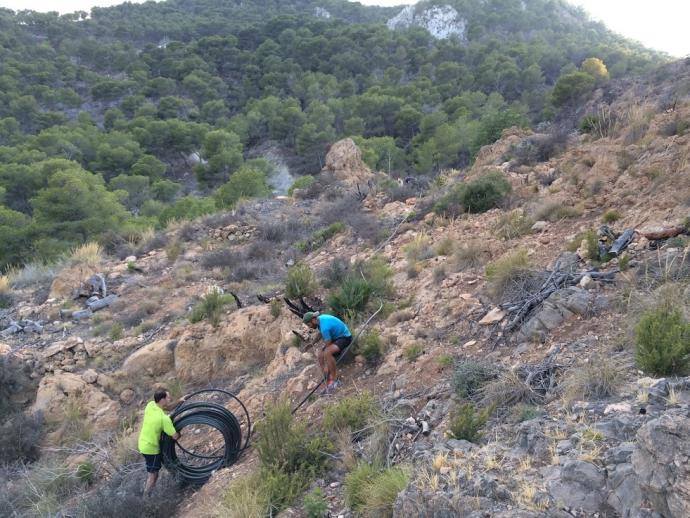 Montaje del sistema de riego por goteo en la zona incendiada.
Montaje del sistema de riego por goteo en la zona incendiada.
La balsa de la Muela, una zona de interés especial
La balsa de la Muela es una zona de interés especial, y no sólo por ser una parada obligada para los senderistas y caminantes que buscan refrescarse bajo el sombraje que la cubre o saciar su sed con el manantial que la alimenta.
Esta balsa sirve de abrevadero para los mamíferos que pueblan la sierra de la Muela, tanto los que se pueden observar comúnmente -jabalíes y muflones- como probablemente a otros más esquivos -zorros, garduñas, tejones o lirones-. Esta alberca también es esencial para las aves en tránsito que se detienen a refrescarse y beber en los charcos que la circundan. De los 39 cuerpos de agua repartidos por toda la región estudiados por nuestros compañeros de ANSE las dos últimas primaveras, éste es el que registró mayor afluencia de aves el año pasado, contando con picos de hasta 150 aves por hora y hasta una treintena especies distintas (fringílidos, escribanos, palomas, tórtolas, currucas, mosquiteros, papamoscas, chochines, etc.).
Pero es que, además, esta balsa esconde un pequeño ecosistema… y una gran sorpresa. En ella habitan anfibios como la rana común (Pelophylax Perezi), el sapo corredor (Bufo calamita) o la culebra de cogulla (Macroprotodon brevis), que seguramente la frecuenta en busca de alimento.
La sorpresa es que en sus aguas también proliferan los fartets (Aphanius Iberus), una especie de pez endémico del sureste español, actualmente en peligro de extinción, y que probablemente fue introducido en la balsa de manera artificial.
Por todo lo anteriormente indicado, desde nuestra asociación fuimos muy cuidadosos a la hora de diseñar la manera en la que integraríamos nuestro sistema de riego en esta balsa para minimizar cualquier posible alteración en el medio e impedir que, de manera accidental, la balsa pudiera vaciarse por completo. Y, aún más, decidimos ampliar el alcance del proyecto para dotar a la balsa de un bebedero para aves, añadir un rebosadero que permita dirigir el exceso de agua a las pedrizas inferiores, incorporar una rampa de salida de anfibios (que también pudiera ser usado por cualquier animal grande en el caso de caer a la balsa accidentalmente), construir un nuevo abrevadero para mamíferos que pueda ser usado cuando se produzca un vaciado parcial de la misma durante los riegos previstos e instalar cartelería informativa sobre la fauna que la habita.
La balsa de la Muela y sus alrededores, estado de conservación.
Cuando iniciamos los preparativos del proyecto y se visitó la balsa de La Muela para estudiar cual sería la mejor solución para conectar el sistema de riego, pudimos constatar el estado de ruina de la misma. Las grietas en sus muros, especialmente el anterior, ponían en riesgo la integridad de la estructura en el futuro. Además, por estas mismas grietas, se producían filtraciones de agua que impedían que la lámina de agua subiera de nivel pese al aporte continuo de agua del manantial. Esa situación impedía el aprovechamiento de su agua para el riego. Por este motivo, y tras la autorización de los propietarios, se realizó una reparación de emergencia de la balsa para lo que se requirió su vaciado parcial.
En esta foto mostramos las grietas reparadas y la toma de agua.
Esta obra se aprovechó para la incorporación de la nueva arqueta de riego y parte de las medidas anteriormente indicadas. Desgraciadamente, durante este vaciado, también se observaron en la balsa dos ejemplares de carpín rojo liberados con seguridad por algún desconocedor del impacto que puede causar introducir especies exóticas en un ecosistema tan particular y frágil como este. Durante este proyecto se procederá también a su extracción.
Aquí os queremos mostrar un rebosadero y bebedero para aves.
También se observó el avanzado estado de deterioro de las pedrizas y la vegetación -especialmente los ejemplares de olmo (Ulmus minor)- de las zonas circundantes a la balsa, lo primero probablemente debido a la acción continuada de los jabalíes. ARBA Cartagena analizará la viabilidad de recuperar en el futuro también esta zona.
Desde ARBA Cartagena agradeceremos a los vecinos y paseantes que visitan la Muela que nos ayuden a proteger el entorno e informen de cualquier desperfecto que puedan observar durante la ejecución de este ilusionante proyecto.
Forest restoration project of the burnt area of the Sierra de la Muela
On June 11, 2012, a ridiculous imprudence caused a violent fire on the north face of the Sierra de La Muela.
Thanks to the diligence and professionalism of firefighters and forest agents, the fire could be stopped before it crossed the summit and leapt towards El Realenco and Los Garabitos, where it would have been impossible to control it due to lack of access.
After the fire they had lost something more than about 60,000 m2 of repopulation pine.
ARBA CARTAGENA
ARBA is an Association in Defense of the Autonomous Forest that develops reforestation tasks with native species and works for the recovery of the diversity of the vegetal tapestry.
Restoring the potential vegetation of La Muela.
What should be done then in La Muela taking advantage of the vacuum left by the fire? The best option is always to try to achieve the greatest degree of naturalness possible, try to tend toward the potential vegetation or climax, which is what existed in the area before it began its exploitation by human activity. Climatic vegetation is the one that best adapts to the soil and climate conditions of the place, it is the most stable, being very resistant to external disturbances such as fires, pests, droughts, etc., it is the one that will produce the greatest amount of biomass possible in relation to the current ecological conditions and is the one that will be able to maintain a greater quantity and diversity of animal and plant life. In short, we propose the search for a healthy ecosystem.
Forest restoration project of the burned area of the Sierra de La Muela
The area burned is about 65,000 m2 and has excellent restoration possibilities. We have divided the space into three areas that, initially, we intended to address in three consecutive years from the fall of 2017, but that, due to the total absence of rains during this year, we had to delay a full season.
Towards the potential forest.
A multitude of shrub species have completely colonized the space previously occupied by agriculture. In the first place, opportunistic and primocolonizing species such as cistus (Cistus albidus), aliagas (Calicotome intermedia), lastones (Brachypodium retusum) and Aleppo pines (Pinus halepensis) were installed at the time. In a second phase, the space began to be occupied by shrubs and trees corresponding to the next phase of succession, such as mastic (Pistacia lentiscus), cornicales (Periploca angustifolia), aladiernos (Rhamnus alaternus), coscojas (Quercus coccifera), palm hearts ( Chamaerops humilis), black hawthorn (Rhamnus lycioides) and wild olive (Olea europaea).
All of these species were affected by the fire of 2012. However, all of them rebounded without any problem after the passage of the fire. This is a characteristic common to all species of Mediterranean plants, adapted to the periodic fires typical of this climate.
Throughout the area burned we find all these shrubs that now grow vigorously, once released from the competition with the pines.
On the way to our potential forest the only factor of major alteration would be the excess of Aleppo pine, which is an autochthonous species and can have an important role of soil retention in the early stages of forest restoration. What we consider inappropriate is a forest constituted exclusively by pines.
In certain areas of the burned area some adult pines managed to survive the fire. These specimens, plus some of those regenerated by the fire, will contribute to increase the biodiversity of the forest that we propose.
The sunny areas.
In the plane shown above we have an area marked in green that corresponds to a hard sun area.
Here we will restore an open forest of cypress from Cartagena (Tetraclinis articulata) accompanied by very resistant species, especially cornicales (Periploca angustifolia) accompanied by palmitos (Chamaerops humilis), broom (Ephedra fragilis) and mastic (Pistacia lentiscus).
We also have a large area of mountains with excellent possibilities, oriented to the
northeast, with fairly vertical slopes that remain in shadow for much of the year. In addition, being much of the farm divided into terraces and retaining the old pedrizas due to its early agricultural use, the land has not suffered just erosion and maintains areas with good soil power. For these shades we have decided to restore an African forest with a great diversity of species and well developed composed of cypresses of Cartagena (Tetraclinis articulata), Kermes oaks (Quercus coccifera), wild olive trees (Olea europaea), mastic trees (Pistacia lentiscus), black hawthorns (Rhamnus) lycioides), aladiernos (Rhamnus alaternus) and junipers (Juniperus oxycedrus).
Encinas, labiérnagos and strawberry trees
We have mentioned that the shade area has great possibilities due to its soil and humidity conditions.
In the next slope of La Muela, towards the west, there is a shady, affected by the 2012 fire, steep and with some very unusual species for the mountains of Cartagena.
Knowing that a holm oak grove would be in Cartagena very close to its natural conditions, our proposal for the burned shady area of La Muela is to reproduce something similar to what exists in El Cabezo del Horno de Calblanque: a cypress forest in Cartagena with Holm oaks, strawberry trees and labiérnagos, together with mastic trees, palm hearts, pines, wild olives, kermes oaks, etc.
The good soil and shade conditions of the La Muela area allow us to think about the possibility of a good development of the holm oak in the most shady and sheltered areas. At the moment, acorns have already been sown in the fall of 2017 with relative good results. In the next seasons we will continue to implant oaks and kermes oaks by the direct sowing method of the acorns, which is usually quite successful – provided that the boars do not find them. To guarantee the genetic origin of the material sown, the acorns will be collected strictly from the Rambla del Cañar trees.
The strawberry trees (Arbutus unedo) are equally scarce in the mountains of Cartagena. To reproduce them, we will use seeds from the few specimens that still exist in our mountains. Last year also, this association discovered the largest madroñal of the coast of the Region of Murcia in an excellent state of conservation just 3 km from the area that we are going to restore in La Muela.
Essential means for reforestation: the irrigation system.
Driven by the scarce rainfall recorded in recent years, ARBA Cartagena has tried various measures with the ultimate goal of maximizing the survival rate of the trees and shrubs planted in the actions carried out. There is little point in investing many resources or covering large areas if the final results are poor and disappointing.
The maintenance of the plantation – especially during the first two years of life – is crucial for the survival and progress of the seedlings. Having adequate means to provide relief irrigation to the plants, together with their shading in the late spring and early summer periods, has allowed us to obtain survival rates of over 90%.
When the project «Forest restoration of the Sierra de la Muela» was designed, it did not go unnoticed that, unlike previous projects -where we had to transport water to the area of action-, here we had the opportunity to have water from a natural and abundant way for our irrigation system thanks to the spring and raft of the Muela, close to the area affected by the fire.
The raft of the Muela, an area of special interest
The Muela raft is an area of special interest, and not only because it is an obligatory stop for hikers and walkers who seek to cool off under the shade that covers it or quench their thirst with the spring that feeds it.
This raft serves as a watering hole for the mammals that populate the Sierra de la Muela, both those that can be observed commonly -jabalíes and mouflons- and probably others that are more elusive -zores, martens, badgers or lirones-. This pool is also essential for birds in transit that stop to cool off and drink in the puddles that surround it. Of the 39 bodies of water distributed throughout the region studied by our ANSE partners the last two springs, this is the one that registered the highest influx of birds last year, with peaks of up to 150 birds per hour and up to thirty different species (finches, scribes, doves, turtledoves, warblers, mosquito nets, flycatchers, wrens, etc.).
But, in addition, this raft hides a small ecosystem … and a great surprise. In her they inhabit amphibians like the common frog (Pelophylax Perezi), the corridor toad (Bufo calamita) or the cogulla snake (Macroprotodon brevis), that surely frequents it in search of food.
The surprise is that fartets (Aphanius Iberus), a species of endemic fish from southeastern Spain, currently endangered, and that probably was artificially introduced into the raft, also proliferate in its waters.
For all the above, from our association we were very careful when designing the way in which we would integrate our irrigation system in this raft to minimize any possible alteration in the environment and prevent the pond from being accidentally emptied. completely. And, even more, we decided to expand the scope of the project to provide the raft with a bird feeder, add an overflow that allows the excess water to be directed to the lower pedrizas, incorporate an amphibious exit ramp (which could also be used). for any large animal in the event of accidentally falling into the raft), construct a new trough for mammals that can be used when there is a partial emptying of the same during the planned risks and install information posters about the fauna that inhabits it.
The raft of the Muela and its surroundings, state of conservation
When we began the preparations of the project and visited the pool of La Muela to study what would be the best solution to connect the irrigation system, we could verify the state of ruin of it. The cracks in its walls, especially the previous one, put at risk the integrity of the structure in the future. In addition, by these same cracks, water leaks were produced that prevented the sheet of water from rising despite the continuous supply of water from the spring. That situation prevented the use of their water for irrigation. For this reason, and after the authorization of the owners, an emergency repair of the raft was carried out for which its partial emptying was required.
This work was used for the incorporation of the new irrigation chamber and part of the previously indicated measures. Unfortunately, during this emptying, two red carpines were also observed in the raft, safely released by somebody unaware of the impact that exotic species can cause in such a fragile and unique ecosystem. During this project, it will also be extracted.
The advanced state of deterioration of the pebbles and the vegetation – especially the elm specimens (Ulmus minor) – of the areas surrounding the raft was also observed, the former probably due to the continued action of the wild boars. ARBA Cartagena will analyze the feasibility of recovering this area in the future.
From ARBA Cartagena we would like to thank the neighbors and walkers who visit the Muela to help us protect the environment and report any damage they may see during the execution of this exciting project.


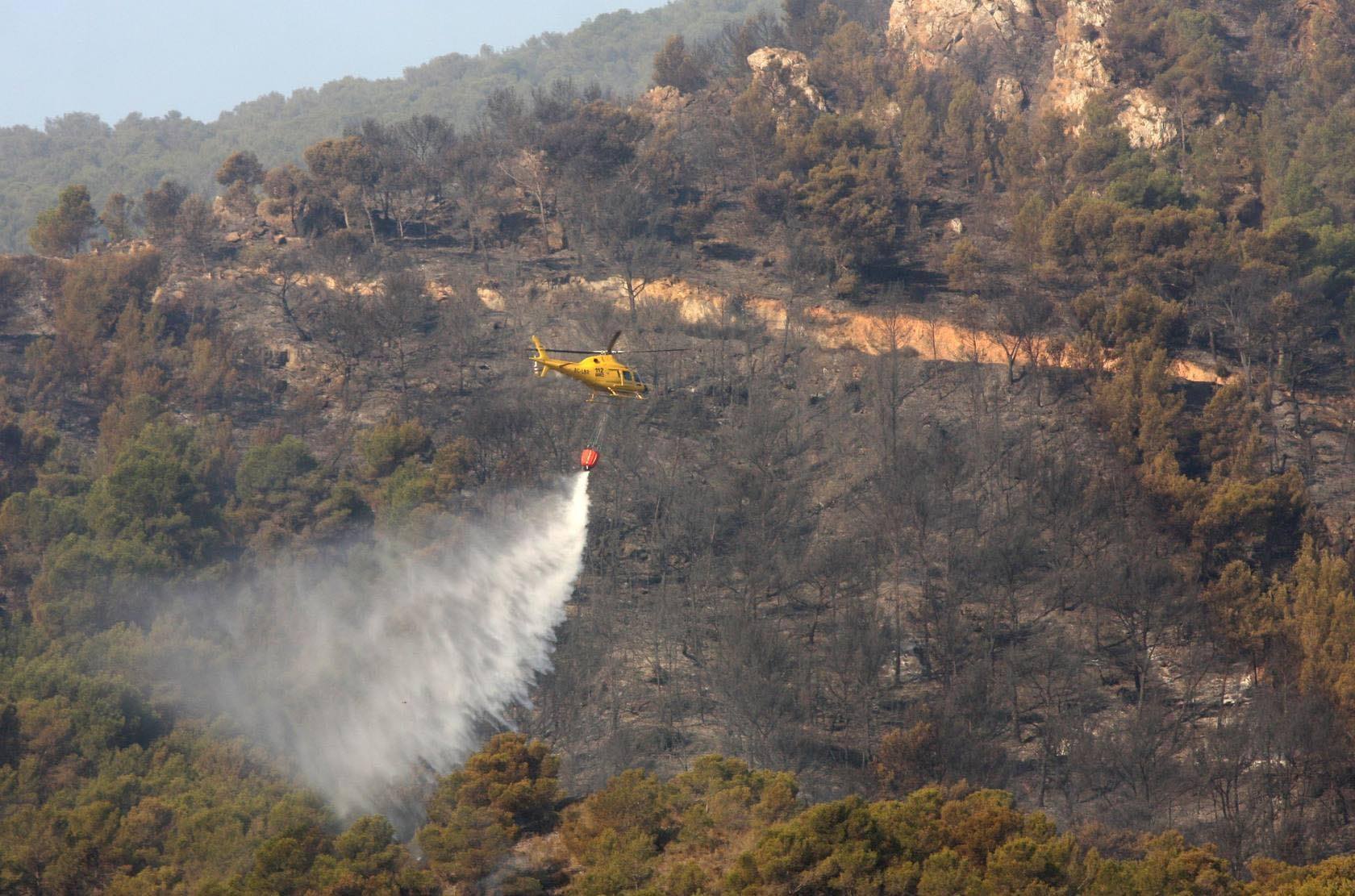
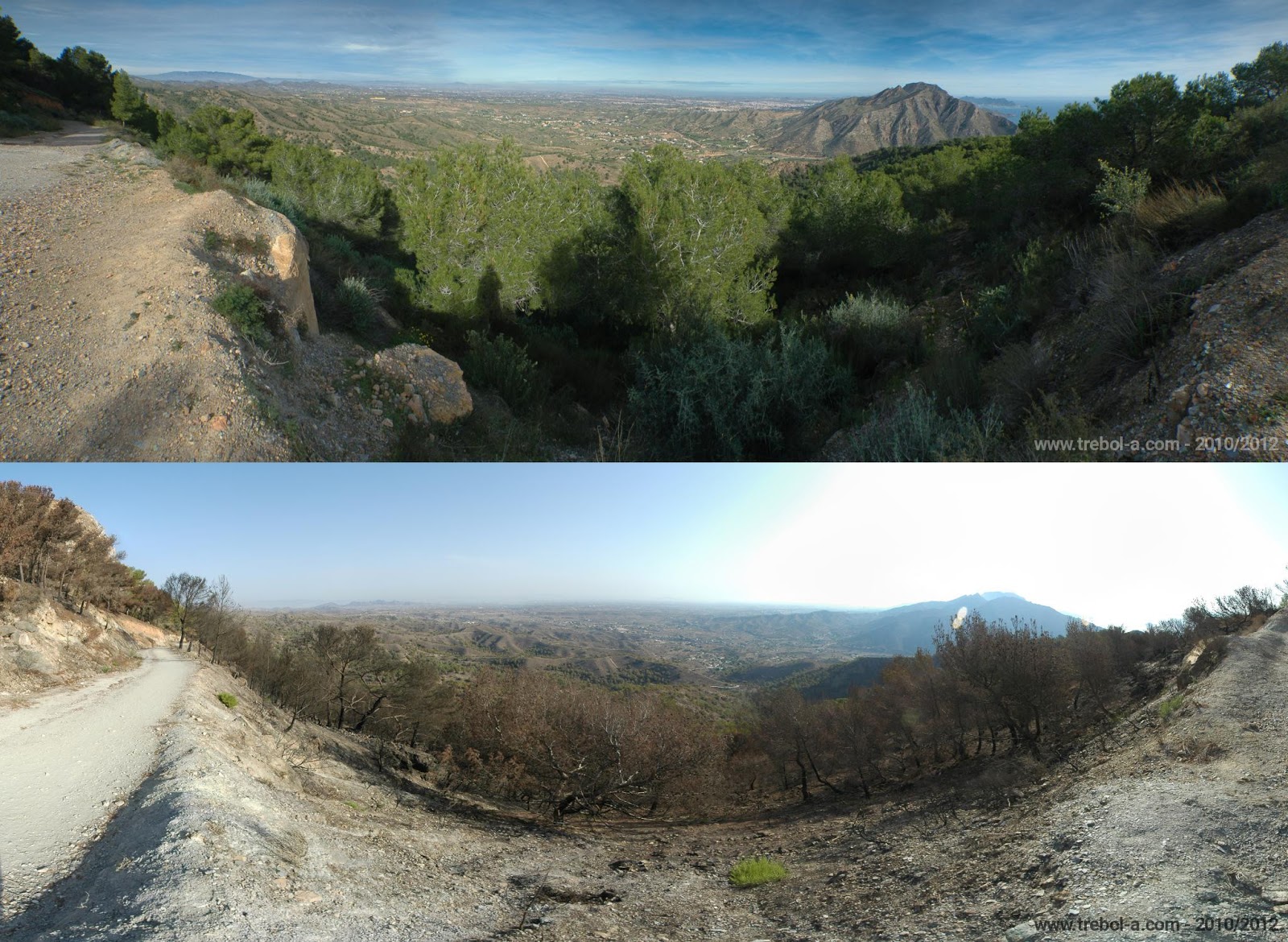

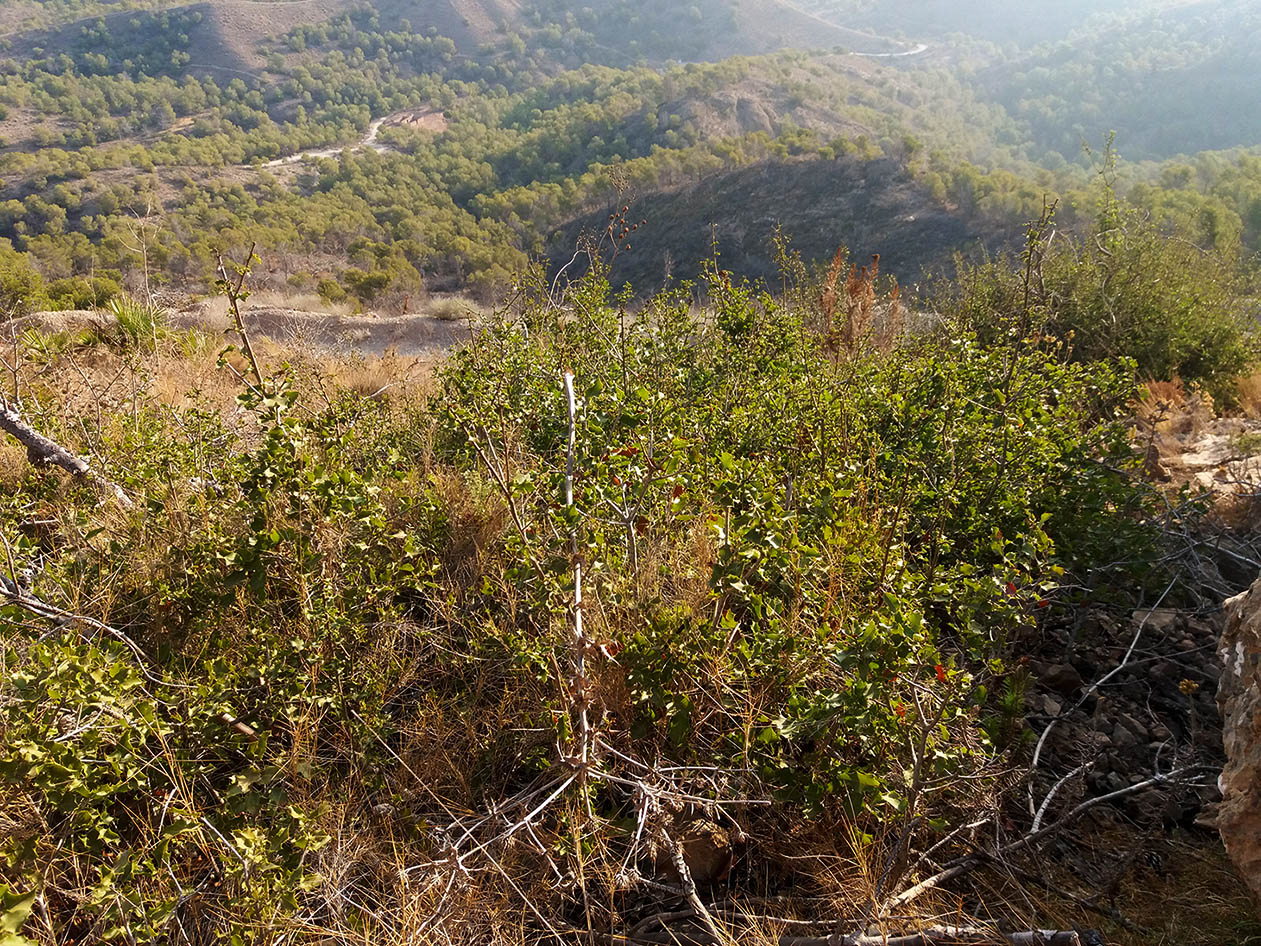
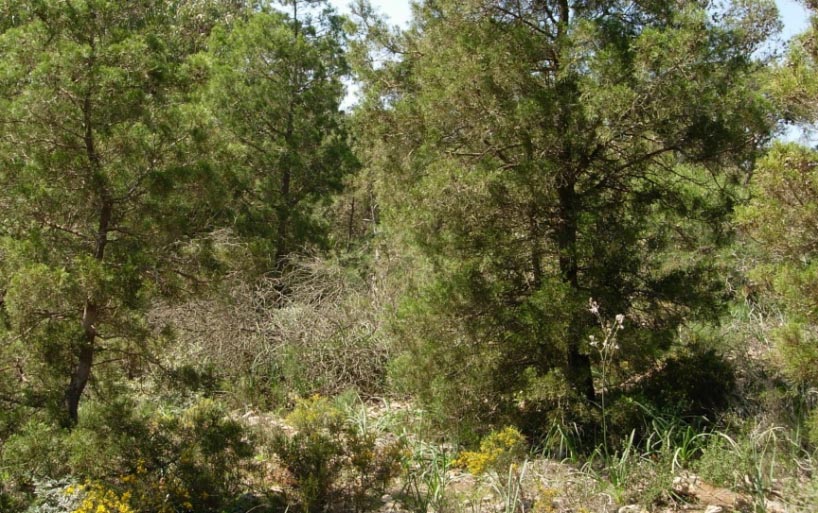
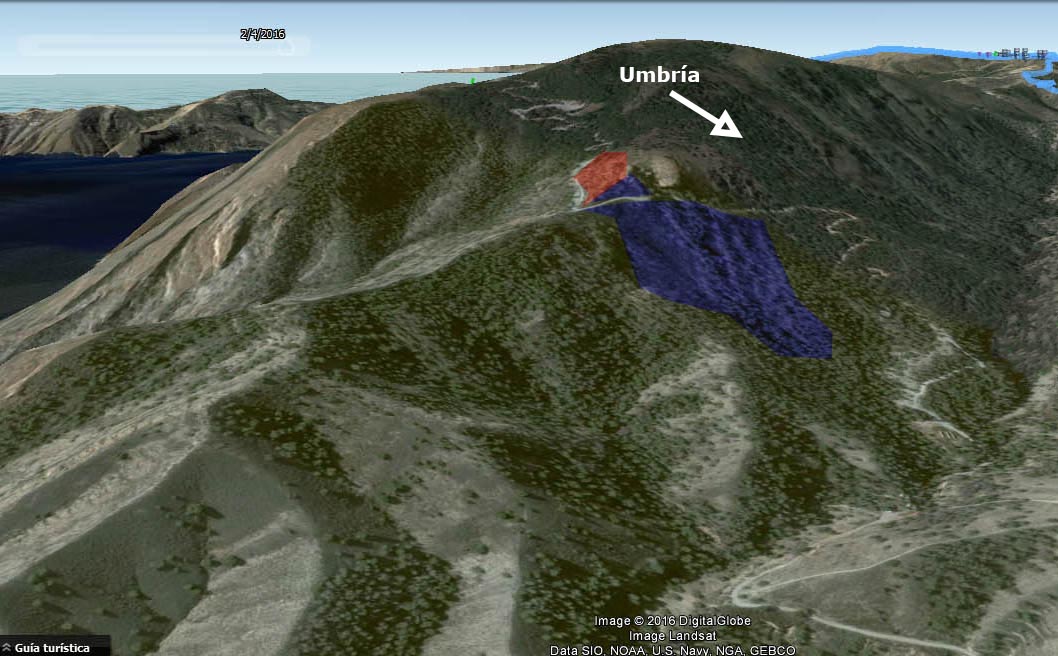
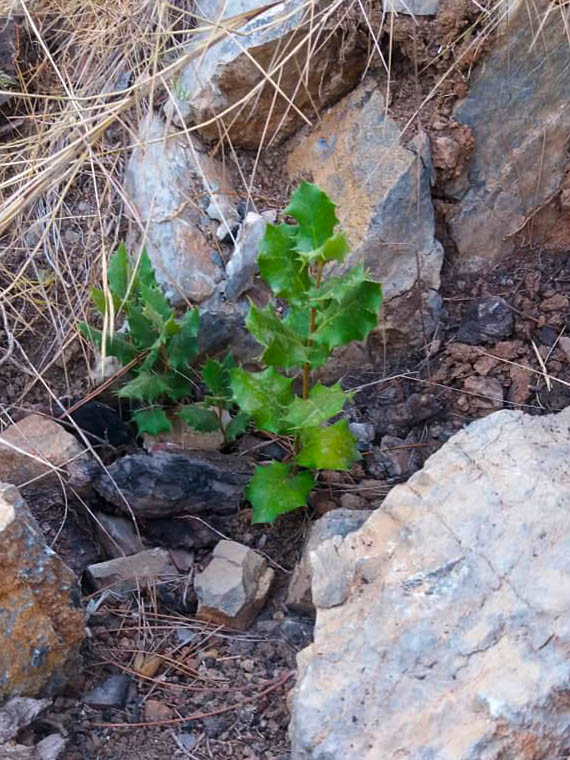

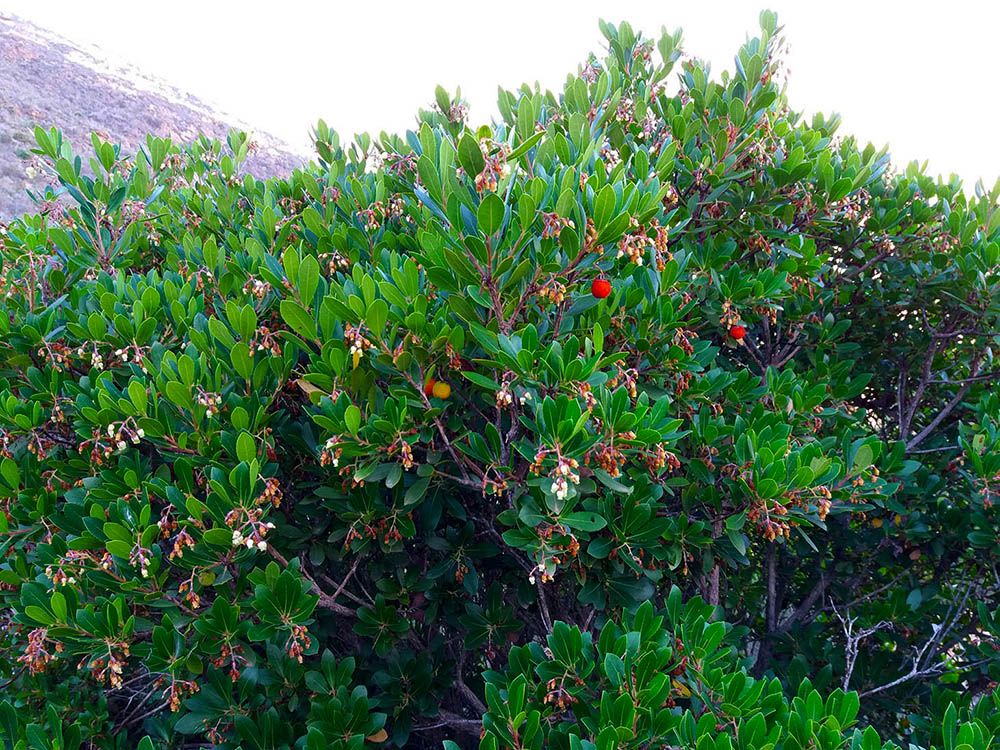

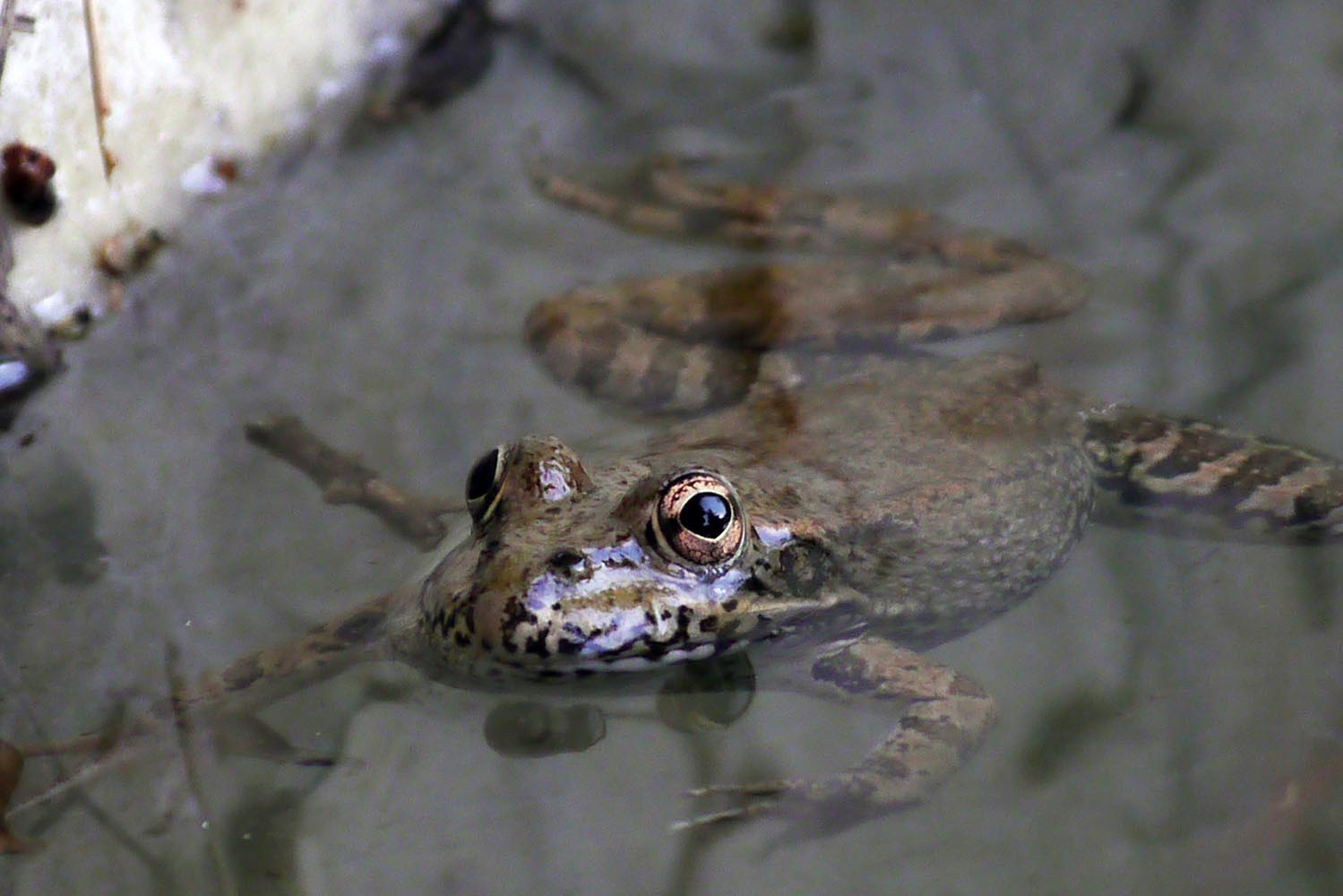
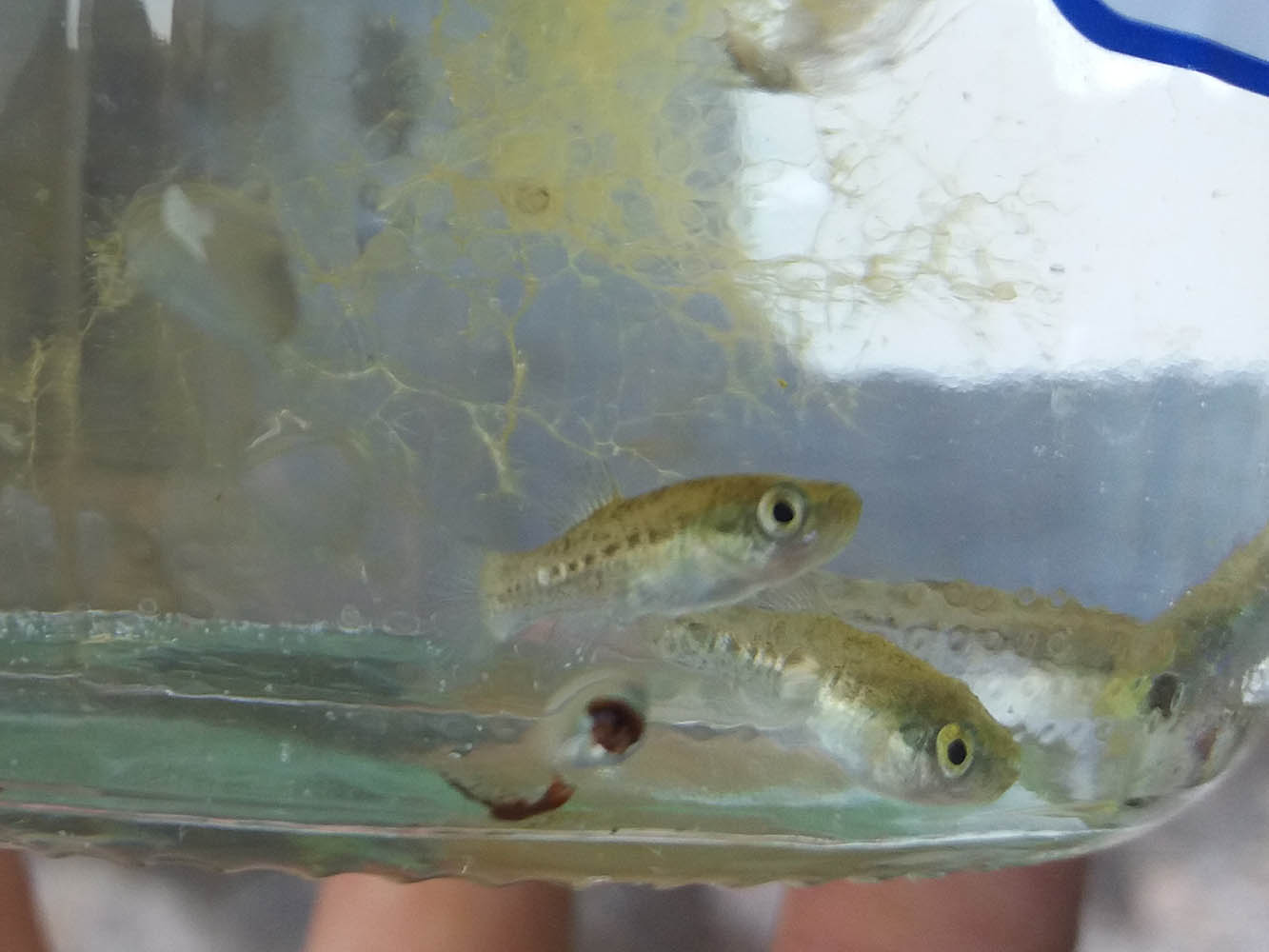
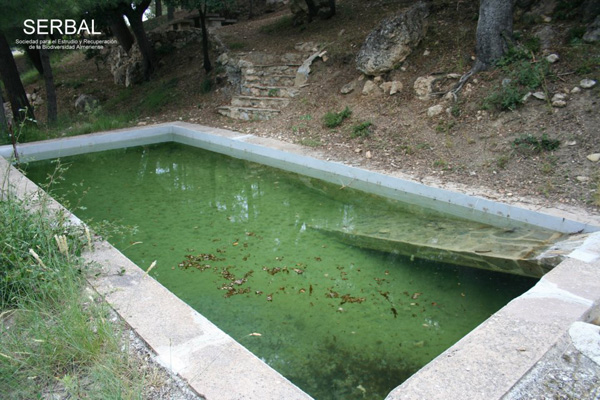

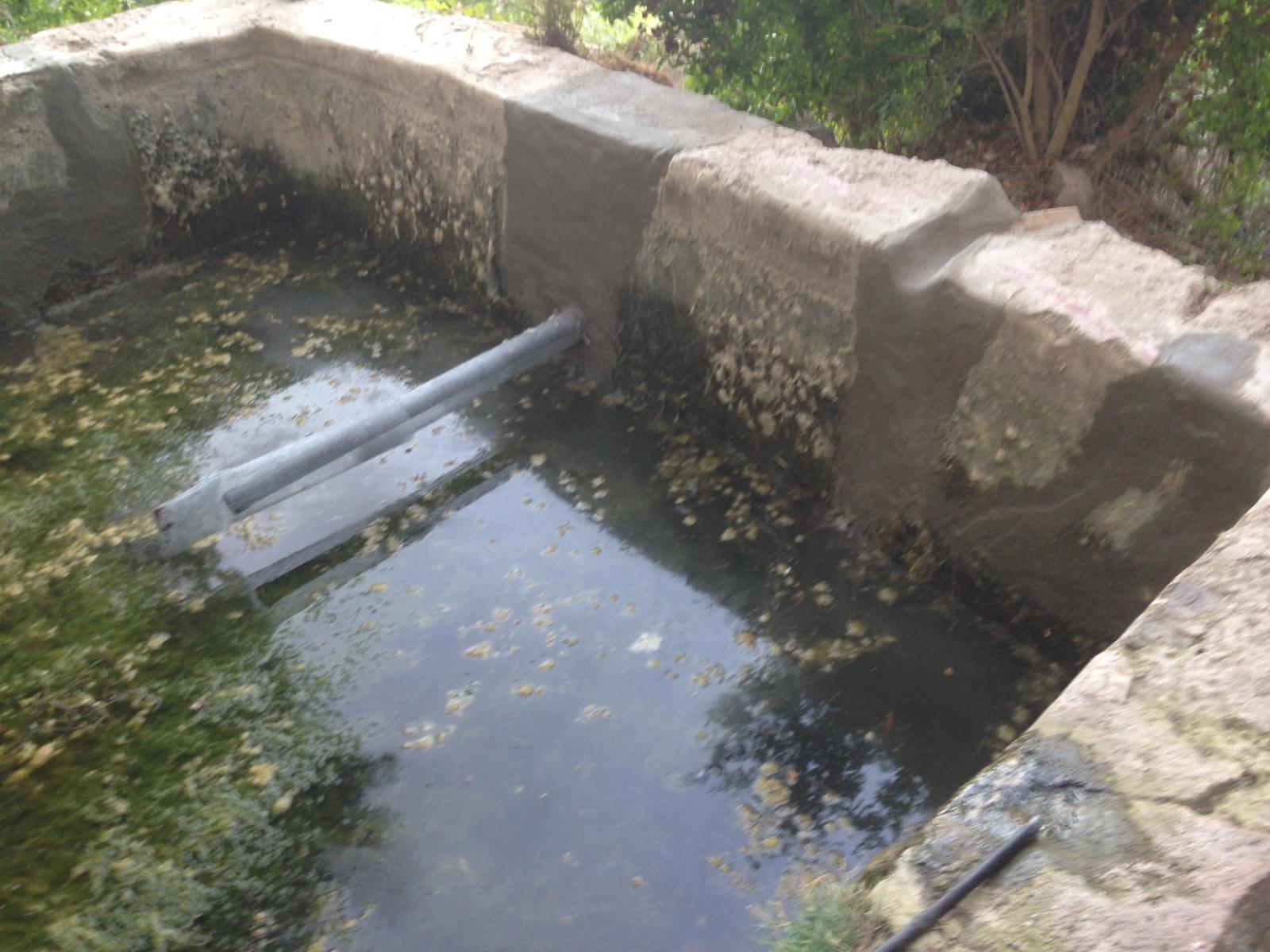
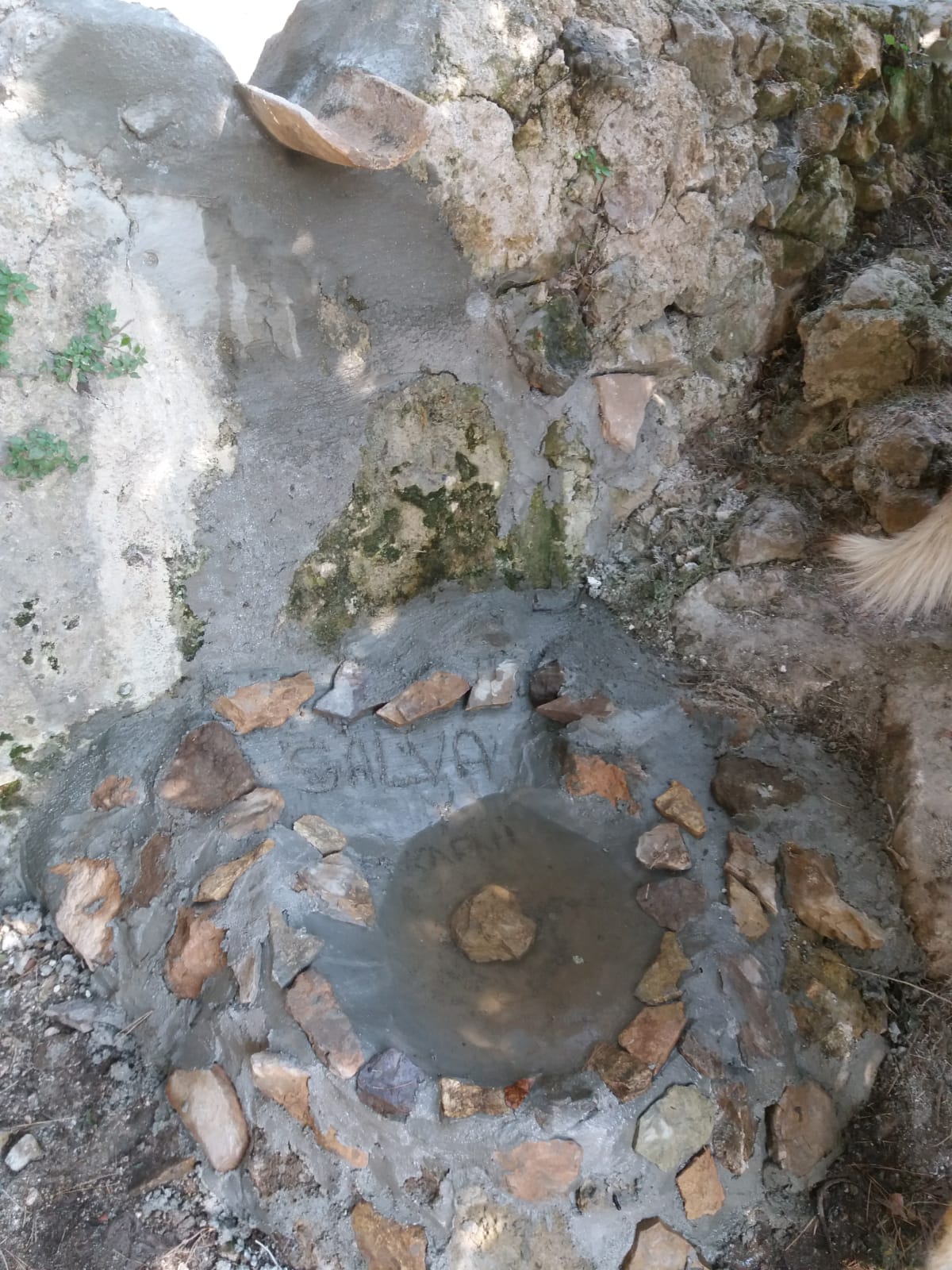
Estupendo y completisimo articulo (¡Gracias Raquel!), sobre lo hecho y lo que hay que seguir haciendo para cuidar y potenciar el entorno de El Portus y particularmente en La Muela. Enhorabuena a ARBA por su trabajo que con tiempo dará su fruto. Seguid así.
Gracias a ti,muchas gracias 🙂
Espero verte pronto.
Un saludo.